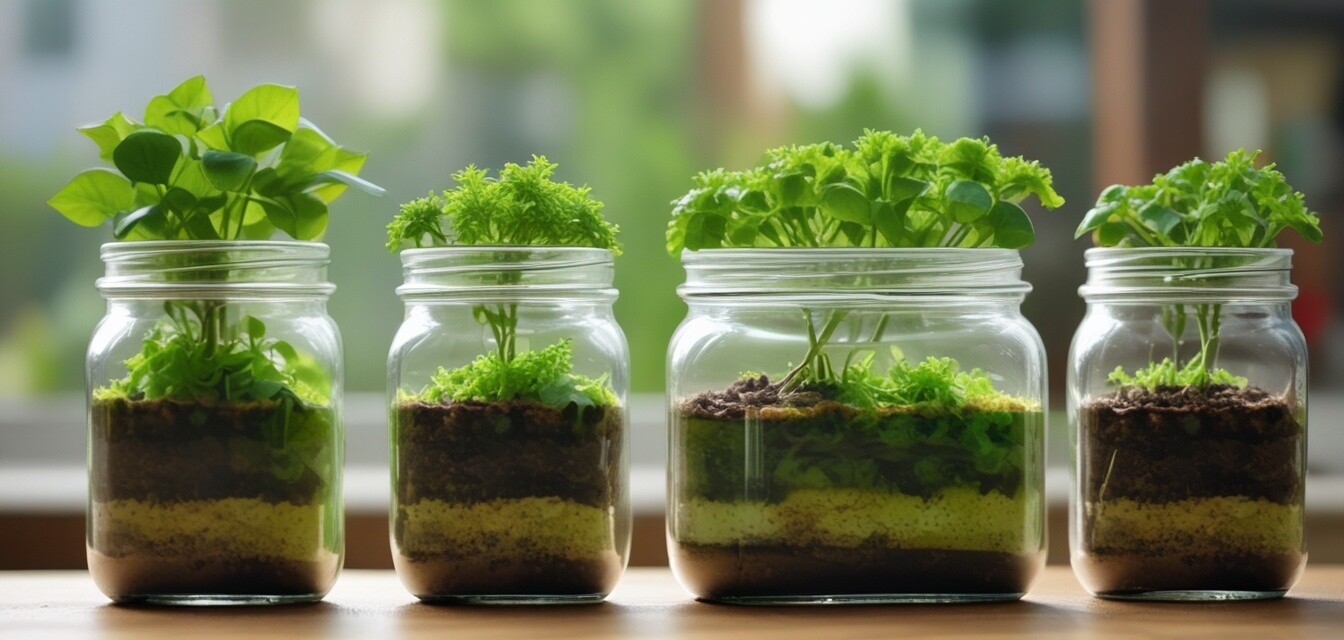
DIY Hydroponic System Using Mason Jars
Key Takeaways
- Building a hydroponic system with mason jars is simple and cost-effective.
- This method is ideal for beginners and those with limited space.
- Mason jars are an excellent choice for growing herbs and small plants.
- Using nutrient solutions is essential for healthy plant growth.
- Maintaining the right environment is crucial for successful hydroponic gardening.
Creating a hydroponic system using mason jars is a great way to start your gardening journey without needing extensive space or complicated equipment. In this guide, we'll walk you through the step-by-step process to set up your own small-scale hydroponic garden, focusing on ease and accessibility for everyone.
What is hydroponics?
Hydroponics is a method of growing plants without soil, where nutrients are delivered directly to the roots through a water-based solution. This innovative gardening method allows you to grow a variety of plants indoors or outdoors all year round. For more on hydroponic gardening, check out our buying guides.
Benefits of using mason jars for hydroponics
- Cost-effective and widely available.
- Customizable size and shape for different plants.
- Easy to monitor plant growth.
- Minimal environmental impact compared to traditional gardening.
Materials you'll need
Before getting started, gather the following materials:
| Item | Quantity |
|---|---|
| Mason jars | 2-5 jars (depending on available space) |
| Net pots or mesh lids | 1 per jar |
| Hydroponic nutrient solution | As per instructions on the package |
| Growing medium (e.g., clay pellets, rock wool) | As needed |
| Seedlings or seeds of choice | 1-2 per jar |
| Water | As needed |
Steps to create your mason jar hydroponic system
- Prepare your jars: Clean the mason jars thoroughly before use.
- Set up the net pots: Place net pots or mesh lids securely on the top of each mason jar. Ensure they fit snugly.
- Add growing medium: Fill each net pot with your chosen growing medium, leaving some space at the top.
- Plant your seedlings: If using seeds, plant according to the seed packet instructions. If using seedlings, carefully transplant them into the growing medium.
- Mix the nutrient solution: Prepare the hydroponic nutrient solution according to the product's instructions. Fill the mason jars with the solution, ensuring that the growing medium is thoroughly saturated.
- Monitor light and temperature: Place your mason jar hydroponic system in a location that receives ample light, ideally 12-16 hours daily. Ensure the temperature is suitable for the plants you are growing.
- Maintenance: Check your nutrient solution levels regularly, and refill or adjust as needed. Keep an eye on the growth of your plants for any signs of issues.
Tips for success
Beginner Section
- Start with easy-to-grow herbs like basil, mint, and cilantro.
- Be cautious with light intensity to prevent burning your plants.
- Keep track of nutrient levels and adjust as the plants grow.
- Consider using a pH tester to ensure the nutrient solution is balanced.
Common challenges and solutions
As with any gardening method, you may face challenges when growing hydroponically. Here are some common issues and how to address them:
| Challenge | Solution |
|---|---|
| Plants wilting | Check nutrient solution levels and ensure adequate light and temperature. |
| Root rot | Ensure proper aeration and avoid waterlogging by checking drainage. |
| Pests or diseases | Inspect plants regularly and remove any affected foliage immediately. |
| Poor growth | Evaluate nutrient levels and environmental conditions; adjust as needed. |
Conclusion
A mason jar hydroponic system is an easy and accessible way to start your hydroponic gardening journey. By following this guide, you can create your own mini-garden, perfect for fresh herbs and greens.
For more DIY ideas, visit our DIY Projects section, where you'll find creative ways to enhance your hydroponic gardening experience!
Pros
- Inexpensive and accessible materials.
- Requires little space.
- Suitable for beginners.
Cons
- Limited to smaller plants.
- Requires monitoring of nutrient and water levels.
- Less stable than larger systems.

